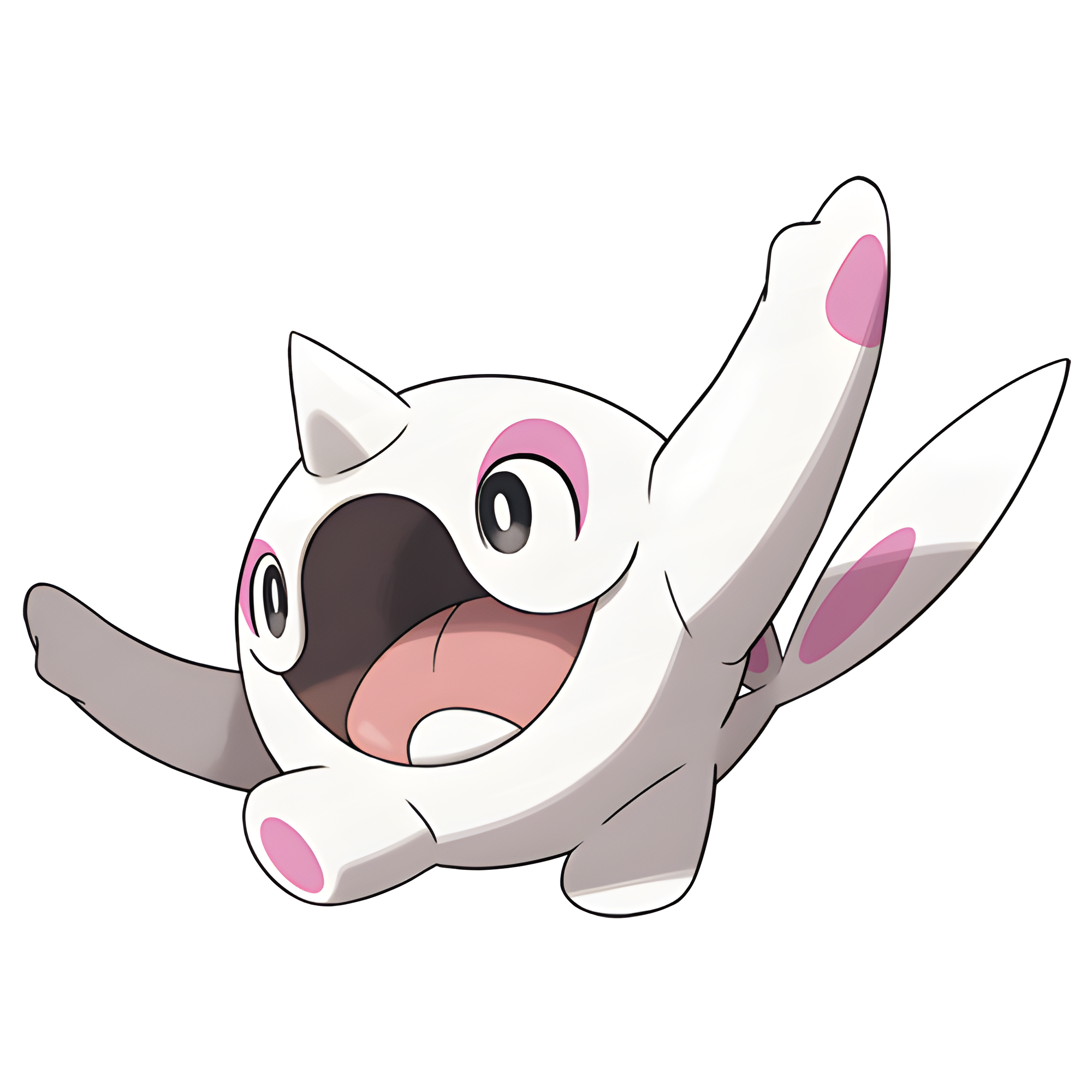Facts for Kids
Cetoddle is a small, playful Ice-type Pokémon known for its penguin-like appearance and its affinity for cold environments.
Overview
Ecological Role
Cultural Significance
Anatomy And Physiology
Habitat And Distribution
Research And Discoveries
Threats And Conservation
Diet And Feeding Behavior
Reproduction And Lifespan

Inside this Article
Little Penguin
Climate Change
Personality
Mountains
Attention
Community
Pokémon
Light
Snow
Did you know?
❄️ Cetoddle is known as the 'Tidal Pokémon' in the Pokémon world.
🐧 Cetoddle evolves into Cetitan when it reaches level 35.
🌊 This Ice-type Pokémon is found primarily in snowy environments.
🐾 Cetoddle has a plump, adorable body that resembles a penguin.
🧊 It is characterized by its frosty-blue coloration and ice-like texture.
🎉 Cetoddle can learn various Ice-type moves to battle opponents effectively.
👶 It is known for its playful nature and often slides on its belly.
💧 Cetoddle's height is about 1' 8'' (0.5 m), making it a small Pokémon.
🏔️ It can withstand freezing temperatures and thrive in icy conditions.
🌟 Cetoddle was introduced in the ninth generation of Pokémon games.
Introduction
It was first introduced in the Pokémon games known as "Pokémon Scarlet and Violet" in 2022. Cetoddle is known as the "Chubby Pokémon" and is a Water-type. This Pokémon can be found in snowy regions, using its blubbery body to keep warm! It loves to slide on ice and swim around in chilly waters. Cetoddle evolves into a bigger Pokémon called Cetitan. People who train Cetoddle enjoy its playful nature and its fun, waddling moves!
Ecological Role
️ Its eating habits help control fish populations, keeping them balanced. By keeping the icy waters healthy, Cetoddle helps other animals that live there too. Additionally, they often help create safe passages for other Pokémon to walk or swim around on icy surfaces. Their playful nature brings joy to both trainers and the Pokémon they interact with, promoting a strong connection in their chilly ecosystems!
Cultural Significance
Kids and fans love its chubby, friendly appearance, making it a popular choice among trainers. In art and videos, Cetoddle represents fun and joy, reminding everyone of the beauty of icy landscapes. Many fans create toys and figures based on Cetoddle, celebrating its cute and adventurous spirit! With its playful personality, Cetoddle teaches kids the value of friendship and exploring nature. It is adored not only for its looks but for the happiness it brings to trainers everywhere!
Anatomy And Physiology
It has a thick layer of fat, which is crucial for keeping it warm in icy places. Its flippers are short but strong, allowing it to paddle efficiently. Cetoddle’s eyes are big and friendly, making it look adorable! 🥰
Its colors are usually a light blue with a little bit of white, resembling ice and snow. This helps it blend in with its surroundings. Cetoddle can also use its body to slide on ice, which it does for fun and to move quickly!
Habitat And Distribution
️🏔️ These regions are often very cold, and Cetoddle is perfectly adapted to this environment. You can also spot them near glaciers or freezing water. Sometimes, they move to warmer areas during summer but they always love their icy homes the most! Trainers often go on adventures in these cold regions to find Cetoddle and catch this playful Pokémon. Just be careful, it loves to slide around while you try to catch it!
Research And Discoveries
🔬 They use special techniques to track where Cetoddles live and gather data on their diets. This research helps find ways to protect them from threats. Pokémon trainers and fans often contribute to these discoveries by sharing their experiences and observations. Collaborating with the Pokémon community helps raise awareness about preserving Cetoddle’s environment, ensuring it thrives for years to come! Teamwork is key in caring for our beloved Pokémon friends! 🌟
Threats And Conservation
Climate change is melting the ice it needs to survive, which is a big problem. Additionally, pollution in the water can make food scarce. Protecting our environment is very important for Pokémon like Cetoddle. To help conserve their habitats, we can support organizations that protect nature and reduce waste. By recycling and being mindful of our surroundings, we can help keep Cetoddle and its icy home safe for future generations to enjoy! 💚
Diet And Feeding Behavior
Reproduction And Lifespan
They are known to take care of their young and keep them safe from the cold. When the eggs hatch, baby Cetoddles are small but quickly learn to swim and slide! After about 2 to 3 years, they become full-grown Cetottles. In the wild, they can live up to about 10 years. When cared for by Pokémon Trainers, they often live longer, thanks to all the love and attention they receive!

